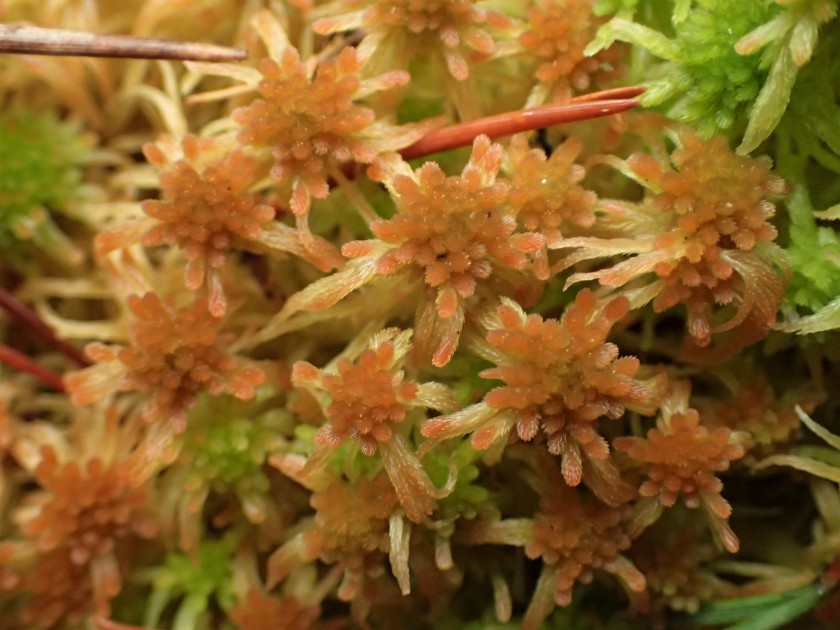In my last blog, I mentioned that I might try and find all of the UK Sphagnum species in a year; partly for fun, and partly as an incentive to learn more about the identification and ecology of this fascinating genus of mosses. Well I’ve decided that it’s a good idea (especially as I’m based in the Scottish highlands until September!), and so last Sunday (13/01) I went on my first trip out looking exclusively for Sphagnums. The area I visited was in Abernethy Forest in the Cairngorms National Park. It was an area of open bog and woodland (and everything in between) in which over 20 species of Sphagnum had been previously recorded; that’s over half the British species! I was really pleased to find 17 species of Sphagnum that day. All but the commonest few were new to me this year, and 6 species I’d never seen before at all: S.affine, S.angustifolium, S.austinii, S.flexuosum, S.rubellum and S.russowii!
Here are a few photos of some of the finds from that day:
S.austinii, a very distinctive species with densely-packed maggot-like branches that forms large (50cm tall) firm hummocks in bogs. It is quite scarce, and has a strongly Northern-biased UK distribution.




The smallest Sphagnum in the UK; S.tenellum. Often growing low down at the bases of larger Sphagnums, I find its colour is usually distinctive from a distance. At the tip of its branches, it has divergent leaves that resemble an open birds beak (according to several authors, and I agree!).
I was slightly frustrated not to have photographed the rare Sphagnum affine, but I had the same issue with that as I did with S.angustifolium and S.flexuosum: it looks very similar in the field to a much commoner species (in this case S.papillosum), so I gathered several specimens for checking under high power microscopy, without photographing all of them. One specimen was indeed S.affine, but this need a cross-sectioned leaf at 200x magnification to confirm! Now I know its typical field appearance, I’ll be photographing any likely candidates before collecting a sample!
Overall, a good start to seeing and photographing Britain’s 40 (according to the latest literature) Sphagnum species. Looking forward, some of the rarer species may well involve walking out to some of the most remote flow country in the far North of Scotland, or climbing over some fairly large mountains. It’s going to be a fun challenge!






